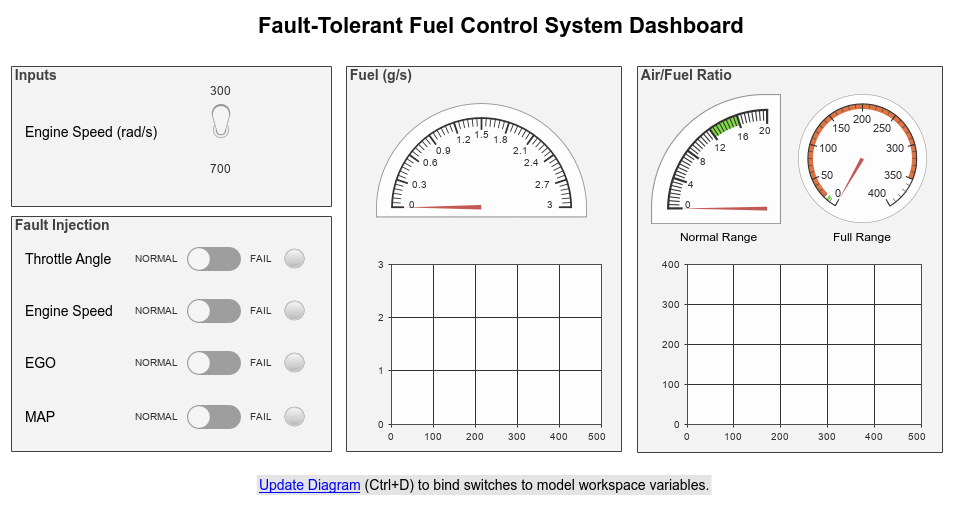Relational Operator
对输入执行指定的关系运算
库:
Simulink /
Commonly Used Blocks
Simulink /
Logic and Bit Operations
HDL Coder /
Commonly Used Blocks
HDL Coder /
HDL Floating Point Operations
HDL Coder /
Logic and Bit Operations
描述
Relational Operator 模块对输入执行指定的关系运算。为关系运算符参数选择的值确定模块是接受一个还是两个输入信号。
双输入模式
默认情况下,Relational Operator 模块使用您指定的关系运算符参数比较两个输入。第一个输入对应于上面的输入端口,第二个输入对应于下面的输入端口。(有关各种模块方向的端口顺序的描述,请参阅标识旋转或翻转模块上的端口位置。)
您可以在双输入模式中指定以下运算之一:
| 运算 | 描述 |
|---|---|
|
| 如果第一个输入等于第二个输入,则为 TRUE |
|
| 如果第一个输入不等于第二个输入,则为 TRUE |
|
| 如果第一个输入小于第二个输入,则为 TRUE |
|
| 如果第一个输入小于或等于第二个输入,则为 TRUE |
|
| 如果第一个输入大于或等于第二个输入,则为 TRUE |
|
| 如果第一个输入大于第二个输入,则为 TRUE |
您可以将输入指定为标量、数组或者标量与数组的组合。
| 对于... | 输出为... |
|---|---|
| 标量输入 | 标量 |
| 数组输入 | 具有相同维度的数组,其中每个元素是对输入数组逐元素比较的结果 |
| 混合标量和数组输入 | 数组,其中每个元素是将标量与对应的数组元素进行比较的结果 |
如果关系运算可以在硬件板上高效且准确地表示,则使用这种高效表示。否则,使用溢出饱和与指定的舍入模式将两个操作数都转换为一种公共类型。
您可以使用输出数据类型参数指定输出的数据类型。如果为 true,则输出为 1;如果为 false,则输出为 0。
提示
选择准确表示零的输出数据类型。满足此条件的数据类型包括有符号整数和无符号整数,以及所有浮点数据类型。
单输入模式
当您为关系运算符选择下列运算之一时,模块将切换到单输入模式。
| 运算 | 描述 |
|---|---|
|
| 如果输入为 |
|
| 如果输入为 |
|
| 如果输入为有限值,则为 TRUE |
对于非浮点输入,模块将生成以下输出。
| 数据类型 | 运算 | 模块输出 |
|---|---|---|
|
| False |
|
| False | |
|
| true |
数据类型传播的规则
当您的模块有一个或多个输入端口未指定数据类型时,将按以下规则进行数据类型传播。
| 当模块位于... | 而且... | 模块使用... |
|---|---|---|
| 双输入模式 | 两个输入端口均未指定数据类型 | double 作为两个输入的默认数据类型 |
| 一个输入端口未指定数据类型 | 指定了数据类型的输入端口的数据类型作为另一个端口的默认数据类型 | |
| 单输入模式 | 输入端口未指定数据类型 | double 作为输入的默认数据类型 |
示例
端口
输入
输出
参数
模块特性
数据类型 |
|
直接馈通 |
|
多维信号 |
|
可变大小信号 |
|
过零检测 |
|
扩展功能
版本历史记录
在 R2006a 之前推出

